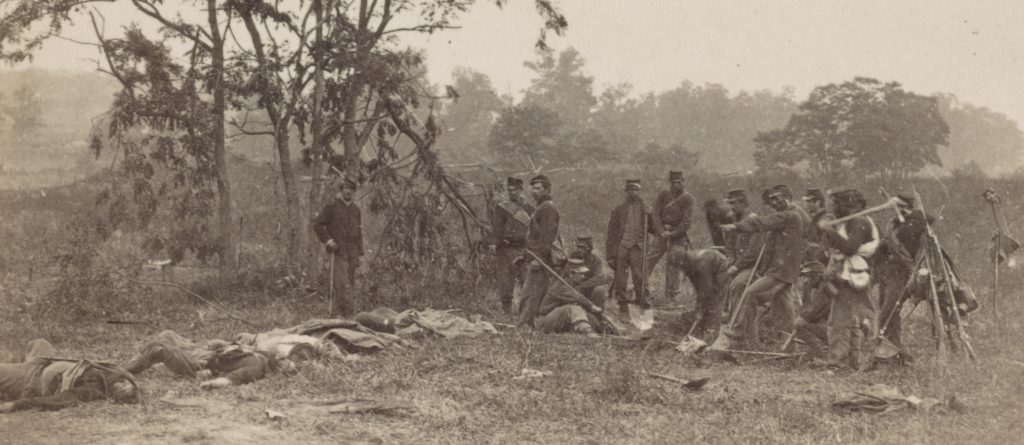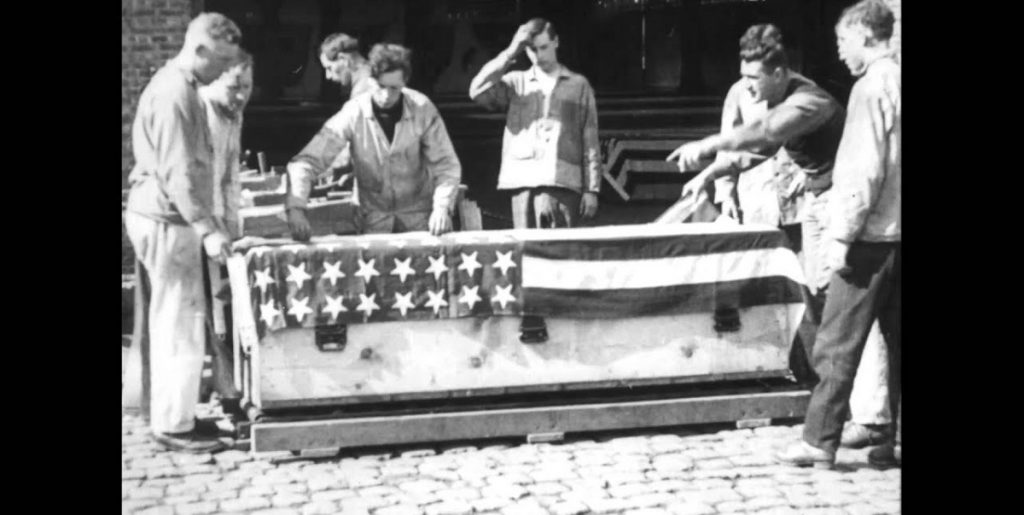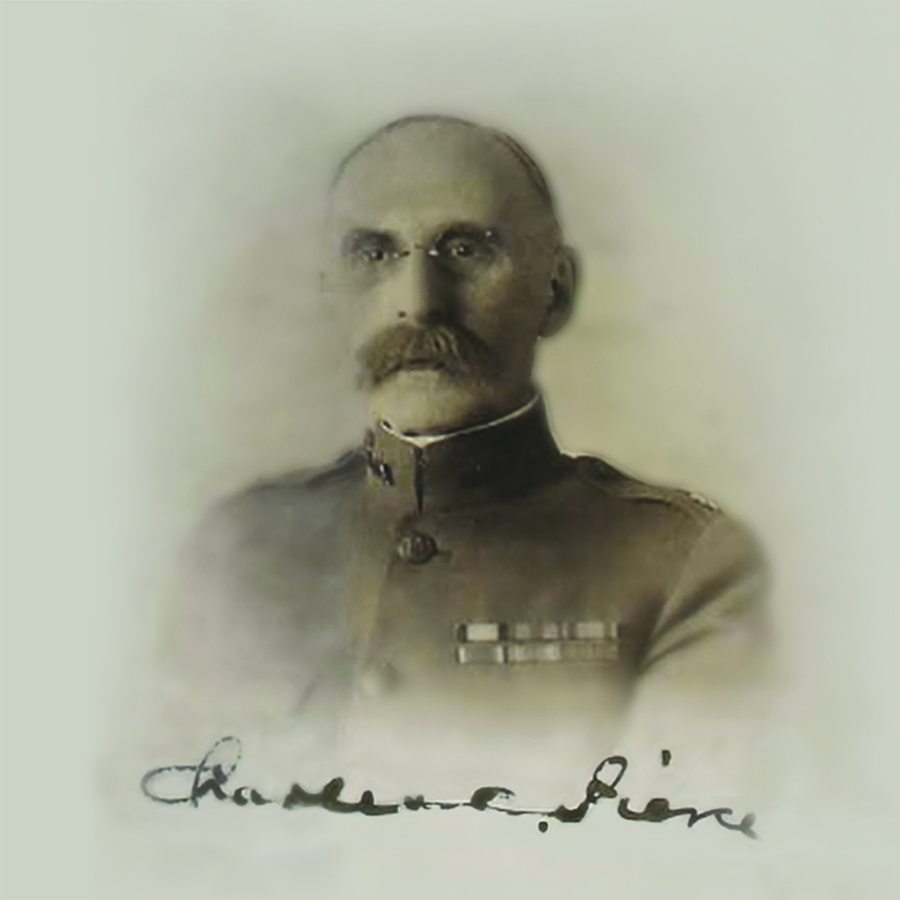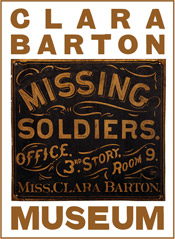Burying the Dead – From the Civil War to World War I
Few tasks could make a Civil War soldier tremble as much as burial detail in the aftermath of a major battle.
One soldier wrote of his experience on a burial detail after Gettysburg in July 1863:
The sights and smells that assailed us were simply indescribable – corpses swollen to twice their original size, some of them actually burst asunder with the pressure of foul gases and vapors… The odors were nauseating and so deadly that in a short time we all sickened and were lying with our mouths close to the ground, most of us vomiting profusely.

Burial detail on the Antietam Battlefield Courtesy of the Library of Congress
On the battlefields of America’s bloodiest conflict, men fell in droves and to the victorious army went the unpleasant duty of burying the dead. With few ways of identifying the dead as they decayed in the sun, many of those who died in battle were laid in unknown graves near the places where they fell. This created an unbearable situation for families whose loved ones perished in service to their country, leaving them with little closure. It was ultimately this situation that led to the establishment of a Missing Soldiers Office by Clara Barton in 1865.
In the aftermath of the Civil War, Federal contractors were paid to go over major battlefields and recover known Union burials for interment in a newly established national cemetery system. These contractors traversed battlefields and removed the dead from their battlefield graves, striving to recover the fallen heroes.
Decades after the Civil War, in the Spanish-American War, the need for identification tags for American soldiers was recommended by an Army chaplain. These ID tags were first widely used by the U.S. Army during the First World War.

Graves Registration Service at work
Colonel Charles C. Pierce’s recommendation for the addition of “dog tags,” and his subsequent leadership of the Quartermaster Department’s Grave Registration Service in the Great War earned him the nickname “Father of Mortuary Services.”

Charles C. Pierce
In the video below, you’ll see the honorable, but grisly work of the Grave Registration Service on the battlefields of Europe following the end of hostilities in 1919-1920. In it, you’ll see work that matched that done on Civil War battlefields in the 1860s. Contractors and army personnel removing the dead from battlefield graves and removing them to larger national cemeteries or placing them on ships for repatriation to the United States. While these scenes are not easy to watch, they do represent work that honored American soldiers who gave the last full measure of devotion to their country.
Tags: Antietam, Burial, Burial of the dead, Charles C Pierce, dog tags, Gettysburg, Graves Registration, Missing soldiers Posted in: Uncategorized

